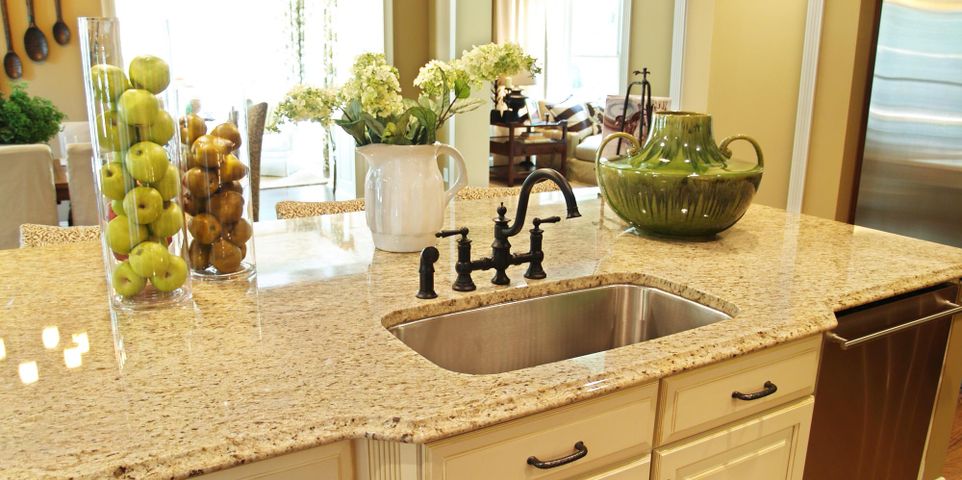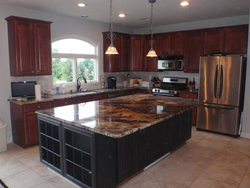
When you're planning stone countertop installation, you want a high-quality, attractive piece of marble, and veining is a significant factor in this. Veining gives many kinds of natural stone countertops their distinctive character. Here's what you need to know to make a quality selection.
How Are Custom Countertop Veins Formed?
The veins in marble and similar natural stone countertops occur when the stone cracks and the space fills with minerals of a slightly different composition. This process leaves areas of different color in the stone. Crack-sea growth veins occur when cracks open and fill in again quickly, and look like long, branching streaks. Open-space filling is a slower process in which layer after layer of minerals are deposited on the walls of a large space, creating round spots and rings similar to those seen in agate.
Cross Cut vs. Vein Cut Slabs
 Stones are typically cut in one of two ways. When the cut runs with the veins, it creates the long streaks of color typical in marble construction and is called a vein cut slab. When the stone is cut at an angle to the veins, the veins appear as smaller swirls instead of long lines, and the piece is called a cross cut slab. The cut and quality of the material determine the appearance of a natural stone countertop, so look at examples of both before making your selection.
Stones are typically cut in one of two ways. When the cut runs with the veins, it creates the long streaks of color typical in marble construction and is called a vein cut slab. When the stone is cut at an angle to the veins, the veins appear as smaller swirls instead of long lines, and the piece is called a cross cut slab. The cut and quality of the material determine the appearance of a natural stone countertop, so look at examples of both before making your selection.
If you're interested in a natural stone countertop, visit Stone World at Red Bank. In business for over 12 years, they offer quartz, granite, marble, and other high-quality stone options to beautify your home. In addition to custom countertops, they also provide stone fireplace surrounds. To get started, call (732) 383-5110 or contact them online. You can also check out the showroom in Middletown, NJ.
About the Business
Have a question? Ask the experts!
Send your question

